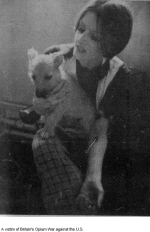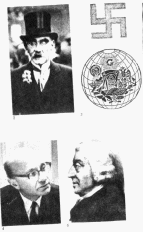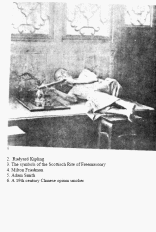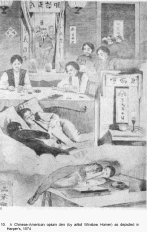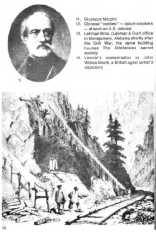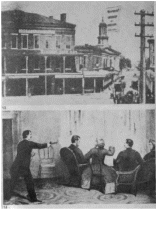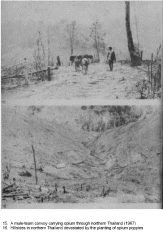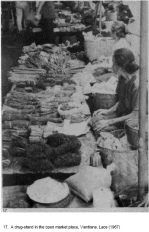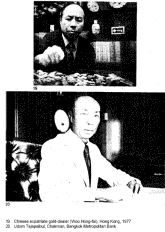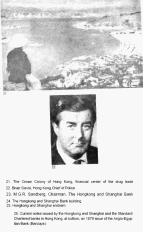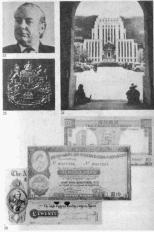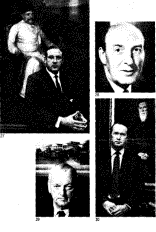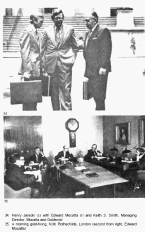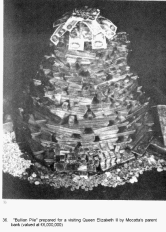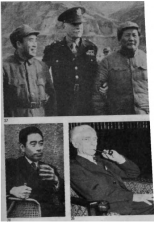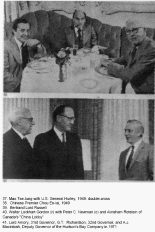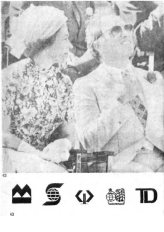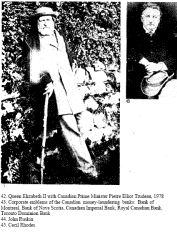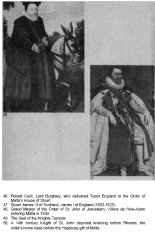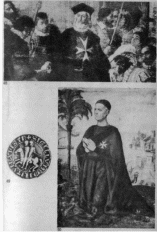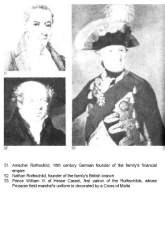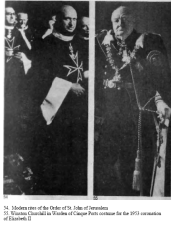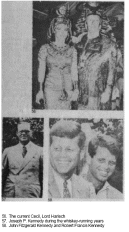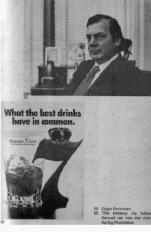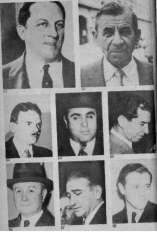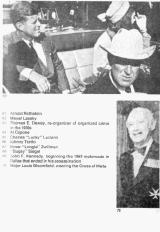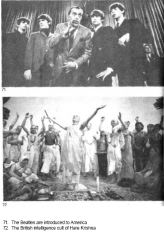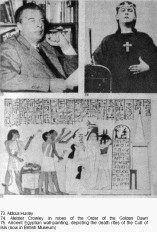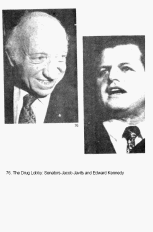| Online: | |
| Visits: | |
| Stories: |

| Story Views | |
| Now: | |
| Last Hour: | |
| Last 24 Hours: | |
| Total: | |
All in the Family: The Real Syndicate, The Criminal Inner Life of the British Elite.
Vatic Note: Oh, this one is really, really good and informative. He is right. Royalty think differently than we do and live differently as well. Its because of their prerogatives as royalty, that they act, talk and work differently than we have ever experienced. They are not encumbered by the same rules as we are.
Remember, these British royalty are not British. They are Germans, that migrated through eastern Europe from Khazaria. They are actually khazarians and that was published on a blog here sometime back. I will try to find the blog and post the link. But if you keep that in mind, then all of this below will make more sense as will their relationship with crime on a global scale, such as the Rothschild/khazarian bankers have done with their drug running and money laundering in cahoots with the Khazarian Rothschilds.
As General Smedley Butler so eloquently stated “War is a racket”, which is done for the benefit of the fascist corporations. He stated the military's purpose is not to serve the state/people, rather to serve the corporate interests internationally. That has been proven to be true. So when you send your sons and daughters off to war, remember, its for corporate profits that they die, get permanently maimed or otherwise psychologically damaged.
General Butler put it into a book that is well worth the read. Remember also, that it was MI6 that created the CIA and Mossad and both work for MI6. Just a reminder that Truman basically said, “I wish I had never created the CIA, since I have no idea what they are doing. They do not report to me and I do not know who they do report to.”
The Royalty work for Rothschild, and the royalty of Europe work for the bankers. This is a mutually beneficial arrangement that suits both sides in so many ways. And in some cases the illums are also the bankers, depending on the family bloodline they come from. Rothschild is one such family. They are both Khazar and through interbreeding by bloodlines, they are also royalty now and definitely Satanic bloodlines with a direct line to demons. Part of all the wars is for soul harvesting, as well as wealth.
They have a new way to confiscate land now. If you are an oil and gas company with khazar owners, sitting on the Boards of Directors, you simply get the local law enforcement bought off and arrest a land owner for something bordering on criminal, make up a story, fabricate evidence, get a conviction and then try to get them to sign over their land to the state when entering into jail.
That happened here, once the PTB discovered shale oil, gas, and coal under a big section of our county, they decided they were no longer going to pay royalties to the land owners for those minerals. Now they want to take the land “FOR FREE” and not pay for either the land, or the royalties for the mineral extractions.
All in the Family: The Real Syndicate
http://www.bibliotecapleyades.net/sociopolitica/dope_inc/dope_inc05.htm#All%20in%20the%20Family:%20The%20Real%20Syndicate
by Konstandinos Kalimtgis, David Goldman, Jeffrey Steinberg
from Archive Website

Why, if so much detailed evidence on the world narcotics traffic exists in the public record or in the files of law enforcement agencies, has this picture remained hidden for so long? The answer put forward at the outset was that the “Purloined Letter” principle is in effect: the Hong Shang and other top traffickers who mingle freely in the business world were designed specifically to hide the drug trade behind a facade of legitimate finance. At bottom, that fraud may deceive the general public, but it could not—by itself—hold professional investigators at bay indefinitely. The more important answer lies deeper.
The answer takes the reader behind the corporate board rooms and precious metal exchanges to the inner life of the British elite. What we now present would be easier to explain in the format of fiction than of fact: the entire world drug traffic has been run by a single Family since its inception. That statement applies not merely to growing and distribution, but to political, intelligence, and ideological support as well. We will sketch out the animal in this section and in the accompanying chart. (VN: as we posted before, the Queen of England has already taken control of the uranium mines. She is to Uranium as DeBeers is to diamonds as one of the largest land owners in the world. The proceeds from these illegal activies are used to purchase up such assets for pennies on the dollar. Its easy, create a crisis, like Haiti using HAARP and then land grab during the worsed of it. Clever and psychopathic as heck. But then what do we expect from lizards.)
Popular accounts of the Italian organized crime families, or their counterparts in the Jewish and expatriate Chinese banking groups, give the reader a starting point whence to look at Great Britain's oligarchy. Britain's elite, in a superficial sense, runs along lines not much different from the organized crime families. The Keswick family of Jardine Matheson, the Inchcape family of the Peninsular and Orient Steamship Co., the Russells, the Dukes of Sutherland and Elgin, appear and reappear in this account, from the first Opium War to the directors' lists of the most prominent British banks.
The same interbreeding dynasty controls every major bank, mining, and transportation company in London, including the HongShang, Jardine Matheson, Barclays Bank, Anglo-American Corporation, N.M. Rothschild, and Lazard Freres. As we will show, their cousins and in-laws also control Britain's political and intelligence establishments, and have done so throughout the entire time-frame of this report.
After a more careful look, however, the “Mafia” image turns out to be something like a pornographic negative: the Italian, Jewish, Ch'ao Chou Chinese, and other ethnic minorities that figure in aspects of the narcotics traffic are fitting allies of the British oligarchy because their tight-knit family networks parallel it. But the British dynasty is deeper, more sinister than that. The dynasty enjoys such power in Britain that a favored nephew can clear opium shipments through Hong Kong, while an uncle clears payments through a big London bank, a second cousin expedites necessary gold shipments through the Hong Kong market, and an in-law in British intelligence reassures the American drug enforcement authorities.
To call this a “conspiracy” would abuse the meaning of the term. Under examination is a dynasty that has controlled Britain for hundreds of years, enjoys virtually all major positions of corporate and political power, and believes that making events happen from behind the scenes is as natural and ordinary as afternoon tea. When the chairmen of the boards of Britain's leading banks, trading houses, and mining companies show up at the same weddings and christenings (and bar mitzvahs) as the chiefs of British intelligence and various government ministries, there is no need for the formal trappings of conspiracy.
Conspiratorial rituals are useful to bind together secret societies composed of otherwise unorganized individuals. But it doesn't work that way at the top. In a frank discussion, a Lazard Freres partner who is quite active in the Royal Institute of International Affairs exclaimed.
“You seem to think that a group of men meets secretly in a room somewhere to hatch plots about this or that. I can assure you that it doesn't work that way!”
The British gentleman is entirely within his rights. Like the HongShang Bank itself, the British oligarchy is so much part of the bedrock of events that it does not need to act in conspiratorial fashion: by its own self-description, it merely is, and always has been. Its adherents have indulged in public self-examination only under the protective coloring of fiction, e.g. a famous novel by a member of one of the British secret societies, Bram Stoker's Dracula.
Of that secret society, the “Order of the Golden Dawn,” more will be said below.
THE FAMILY RELIGION
The sinister element that sets the British oligarchy apart from the popular image of the Mafia family is its unshakable belief that it alone is fit to rule the world—the view reflected in Cecil Rhodes's 1877 Testament, cited in Section 7.
Their religion is not the Anglican Christianity they publicly profess, but a hodgepodge of paganism, including satanic cults such as Theosophy and Rosicrucianism. The central, syncretic ideology of the oligarchy's inner cult life is the revived Egyptian drug cult, the myth of Isis and Osiris, the same anti-Christian cult that ran the Roman Empire. And like the ancient Isis-worshipping Egyptian dynasties, the British ruling family networks have maintained power for centuries by keeping the secrets of their intrigues within the family.
The Isis cult also formed the core of Lord Palmerston's Scottish Rite of Freemasonry. As Prime Minister during both opium Wars, Palmerston employed variants of this ideology to spin a web of connections that stretched from the Order of Zion in Romania to the Ku Klux Klan in the United States. Parts I and III of this report document how Palmerston's Scottish Rite engendered the subterranean world of drug-related mysticism, and its various secret societies, including what the public now calls “Organized Crime.” (1)
The Cult of Isis, dredged up in modern format, was the official ideology of leading British politicians, financiers, and literary figures during the previous century. Its great public exponent was the colonial secretary during the Second Opium War, Edward Bulwer-Lytton, the author of The Last Days of Pompeii, which first popularized the Isis cult, and the mentor of Cecil Rhodes's whole generation of British imperialists.
The Royal Institute of International Affairs was the “secret society” called for in Rhodes's will and is the body that provides the command structure for the drug trade. But the Royal Institute itself was founded by an even more secret group: the “Circle of Initiates . . . devoted to the extension of the British Empire,” in the description of one of its historians. (2) The Circle of Initiates included Lord Milner; Cecil Rhodes, the founder of Britain's African mining empire; future prime minister Arthur Balfour; Albert Grey; and Lord Rothschild.
All these men celebrated forms of the Isis cult. Their worldview was largely designed by Britain's leading exponent of the Isis cult, novelist Edward Bulwer-Lytton, and his protégé John Ruskin. Britain's High Priest of Isis, Bulwer-Lytton, was also the British government's chief drug-runner.
The words of American Founding Father Tom Paine to characterize British King George III, against whom America fought the Revolutionary War, thus are highly appropriate:
“I rejected the hardened, sullen-tempered Pharaoh of England forever . . . and disdain the wretch.”(3)
The elite of the elite in Britain's secret dynastic life is Her Majesty's Most Venerable Order of St. John of Jerusalem — the “Christians who are not really Christians.” (4) We have already highlighted the Knights' prominence in the centers of the world drug traffic: from the Hong Kong and Shanghai Bank to the Canadian Pacific in Vancouver to Barclays Bank in London.
However distant from the familiarity of the American reader, the area we have entered must be viewed the way the families themselves see it. The brooding evil of Walter Scott or Robert Louis Stevenson romances, or their cheap Gothic novel imitations, gives the reader a basis for insight into the inner history of the families, and the need to begin with cobwebbed history in order to get to the bottom of Dope, Incorporated.
To begin at the beginning: in the 14th century, the Order of St. John's emergence in England was part of a project to annihilate its humanist opposition, the Knights Templar. Total warfare had broken out on the continent. The oligarchists in France and Italy, Philip the Fair and Pope Clement V, slaughtered hundreds of Templars, and burned the Templars' courageous Grand Master, Jacques de Molay, at the stake in 1314.
A renegade group of Templars under the command of an adventurous thug, King Robert Bruce, grabbed Scotland — Europe's least civilized outpost — as an “offshore” stronghold, as a form of insurance against their uncertain fortunes on the European continent.
After the death of Jacques du Molay, some Scottish Templars… at the instigation of Robert Bruce ranged themselves under the banners of a New Order (The Royal Order of Scotland) instituted by this prince… It is there that we must seek the origin of the Scottish masonry. (emphasis added) (5)
The Family's Opium Wars
As the accompanying Family Tree (below images) indicates, there is a direct lineage from the King Robert Bruce to the British officials who ran the first opium wars against China. James Bruce, the 8th Earl of Elgin — after supervising the Caribbean slave trade as Jamaican Governor General from 1842-46 — was appointed Ambassador and Minister Plenipotentiary to China from 1857 to 1861 — the period covering the Second Opium War against China. His brother Frederick Bruce had been Colonial Secretary at Hong Kong during the mopping-up operations following the First Opium War and returned to China in 1857 to assist his brother in delivering the British government's ultimatum to the Chinese emperor. (6)
The British Dictionary of National Biography summarizes the Chinese career of the elder Bruce succinctly:
In 1857 Elgin was sent as envoy to China. On reaching Singapore he was met by letters from Lord Canning informing him of the Indian mutiny, and urging him to send troops to Calcutta and from the force which was to accompany him to China. With this requisition he at once complied, sending in fact the whole of the force, but he proceeded himself to Hong Kong in the expectation that troops would speedily follow…He repaired to Calcutta… Later in the year he returned to China, fresh troops having been sent out (to replace those which had been directed to India — ed.)… Canton was speedily taken and some months later a treaty was made at Tientsin, providing, among other matters, for the appointment of a British minister, for additional facilities for British trade (i.e., opium — ed.)… and for a war indemnity. (emphasis added)
In the following year he was again sent to China, the Emperor having failed to ratify the treaty of Tientsin and having committed other unfriendly acts. . . . The military opposition (to Elgin's mass addiction policy — ed.) was not effective, but the Chinese resorted to treachery. (Chinese forces killed some British troops enforcing opium distribution — ed.). In retribution for this treacherous act, the summer palace, the favorite residence of the Emperor at Peking, was destroyed. A few days later the treaty of Tientsin was formally ratified. (7)
Who was running England at the time?
Palmerston and Russell were relatives of the Bruce brothers, the Elgin peerage, by marriage into the direct line of Order of St. John control over England. The branch that encompasses Britain's two leading cabinet ministers during the Second Opium War is the Villiers line. The line began with George Villiers, who assisted Robert Cecil and Edward Bruce in seizing the English throne for another descendant of Robert Bruce — James I of Scotland — in 1603. (8)
Lord Russell's daughter, Victoria, married into the Villiers family. Russell's grandson, Bertrand, among his other covert operations, maintained liaison with Chou En-lai throughout the postwar period on behalf of British intelligence, at the height of the Anglo-Chinese drug traffic. (9)
Even more significant is the third member of the London team during the Opium Wars — Colonial Secretary Edward BulwerLytton, a relation by marriage of the Duke of Wellington. His son married Edith Villiers, of the same branch of the leading Order of St. John dynasty.
The imperial cultists and opium
Bulwer-Lytton is best known to Americans through his 1838 novel, The Last Days of Pompeii, but he is also both the spiritual father of the Rhodes-Milner secret societies and of Nazi fascism. A mystic and prenascent fascist, Bulwer-Lytton led the English Rosicrucians, a branch of the Scottish Rite Masons headed by his Prime Minister Palmerston.
Unlike the comparatively closed members of the British elite around him, Bulwer-Lytton was an outspoken exponent of the Isis cult, which formed the subject of his famous novel. His popularized Isis myth was the inspiration for an entire array of warped imitations.
Included among these was Helena Blavatsky's book, Isis Unveiled, and her Theosophist cult. Theosophy was the Satanic bible of the mystic secret societies, including Germany's “Thule” group, which produced most of Hitler's SS. (10)
Another Bulwer-Lytton protégé was satanist Aleister Crowley, of the “Thule” group's equivalent in England, the “Isis-Urania Hermetic Order of the Golden Dawn.” Both of these groups traced their lineage back to Palmerston's Scottish Rite Masons through Bulwer-Lytton. (11)
Aleister Crowley was the tutor of Aldous Huxley, the prophet of mind control, who later introduced the LSD cult into the United States during the 1950s (see Part IV). (12)
Britain's imperial link to Nazi fascism is even more direct in the case of Bulwer-Lytton's other published work. His novel Rienzi, about the Knights of St. John, provided the text of Richard Wagner's first opera. His 1871 novel, Vril: The Power of the Coming Race, contained virtually everything that Houston Stewart Chamberlain later had to say on racial theory; Prof. Karl Haushofer, who ghost-wrote most of Mein Kampf in Hitler's prison cell 50 years later, named his first secret organization the “Vril Society.” (13)
There is a destiny now possible to us — the highest ever set before a nation, to be accepted or refused. We are still undegenerate in race; a race mingled of the best northern blood… We are rich in an inheritance of honor, which it should be our daily thirst to increase with splendid avarice… (England) must found colonies as fast and as far as she is able… seizing every piece of fruitful ground she can set her foot on, and teaching these her colonists that their… first aim is to advance the power of England by land and sea… (14)
Secondly, Edward Lytton's rule in India provided a home for the most important of the crackpot cultists inspired by his father. Lytton himself was the closest friend of Rudyard Kipling's parents, members of the circle around A. P. Sinnett's Allahabad journal The Pioneer. (16) The elder Bulwer-Lytton's follower Madame Blavatsky, of the Theosophy Cult, appeared in India in 1879, and recruited A. P. Sinnett to her belief-structure. (17) Both Kipling and Blavatsky employed the swastika as their personal mystic symbol. From Kipling, Blavatsky, Haushofer, and others, the swastika found its way into the German cults that formed the core of later Nazism.
Kipling's last major official post was under press czar Lord Beaverbrook at the wartime Propaganda Ministry; working side-by-side with him was a relative of the Lyttons' by marriage, Sir Charles Hambro. Hambro went on to run Britain's dirty operations during World War II as chief of the Special Operations Executive from 1942 onwards. Kipling also served as a trustee of the Rhodes Trust from 1917-25.
Kipling's cousin, Stanley Baldwin, was prime minister from 1923-29 and 1935-37; during his second tenure, the Baldwin government groomed Hitler as a “marcher lord” against the Soviet Union, setting the stage for Munich 1938. (18)
Another well-known British literary figure, also with a mystical bent, deserves mention in this context: Alfred, Lord Tennyson. Tennyson married the niece of the 8th Lord of Elgin (James Bruce), and remained a close personal friend of the commander-in-chief of the Second Opium War. Tennyson was a founding member of the Metaphysical Society, with Bulwer Lytton's protégé John Ruskin, Lord John Russell's uncle Lord Arthur Russell, future prime minister Arthur Balfour, and Thomas Huxley. (19)
Tennyson's unambiguous endorsement of opium abuse was expressed in his well-known poem,
“The Lotus Eaters”:Let us swear an oath, and keep it with an equal mind, In the hollow Lotus-land to live and lie reclined, On the hills like Gods together, careless of Mankind. (20)
Today's opium dynasty
The closing days of the Baldwin government and the opening days of World War II are an appropriate place to pick up the contemporary trail of the leading opium families — the Inchcapes and Keswicks. In 1939 the creation of Britain's Ministry for Economic Warfare offered a meeting place for the old families: Sir John Henry Keswick, later the architect of the Peking Connection; Sir Mark Turner, the current chairman of the old Matheson-Keswick firm Rio Tinto Zinc; Gerald Hyde Villiers, a leading scion of the evil old family; and John Kidston Swire, of the old Swire dope-trading family.
Starting from the Matheson family's role in the first Opium War and tracing through to the World War II period and up to the present, the fortunes of the Matheson and Keswick line of the dynasty run the entire gamut of political developments surrounding the drug trade.
The Rio Tinto Zinc Company was founded in 1873 by James Sutherland Matheson's nephew Hugh Matheson — taking the lineage of that firm all the way back to the days of George III and the American Revolution through then-Prime Minister Spencer Perceval. The younger Matheson founded the firm with his uncle's opium profits and help from the Schroeder banking family — who in 1931 funded Bulwer-Lytton's ideological spawn Adolf Hitler. The Lyttons and Mathesons are relatives by marriage, through the Villiers family and the Sutherland family.
Hugh Matheson's successor at Rio Tinto Zinc in 1898 was J. J. Keswick, a partner in the opium-running Jardine Matheson firm, and a relative of the Mathesons by marriage through the Fraser family.
Apart from their leading role in Jardine Matheson, J. J. Keswick's family had a leading role in the British governance of the official opium trade. His cousin, William P. Keswick, was British Consul-General in Hong Kong during the same years that Edward Lytton, Governor-General in India, was expanding opium output according to the Palmerston program.
William P. Keswick's son Henry Keswick, a past chairman of the Hong Kong and Shanghai Bank at the height of its dope-trading glory, had three sons: David, John H., and William J. David Keswick is still among the largest shareholders and a partner of the London merchant bank Samuel Montagu. Sitting with him on the board of directors of Samuel Montagu is Rio Tinto Zinc's current chairman Sir Mark Turner. Turner, as noted, also worked with brother Sir John Henry Keswick in the Ministry of Economic Warfare. Later, John Henry went on to the British embassy in Chungking, picking up the opium trail where World War II had cut it off (see Section 7).
The third brother, Sir William Johnston Keswick, is the protagonist of Section 8 dealing with Canada; as previously documented, Keswick ruled the Shanghai Municipal Settlements at the height of Shanghai's heroin traffic, and set up the first big heroin connection, via intermediary Jacob “Yasha” Katzenberg (see Part III Section 1).
The family history of the Keswicks intersects the story of the Russells, Villiers, and Bruces through their most senior political operatives, notably Lord Milner. Milner, Cecil Rhodes's protege and one of racist John Ruskin's early trainees, bridged the gap between the establishment of the Rhodes Trust and the creation of the Royal Institute of International Affairs in 1920. Milner became a director of Rio Tinto Zinc in 1921, and served as chairman from 1922 until his death in 1925.
More important, however, is Milner's joint work with the Keswick family in setting forth the “geopolitical” policy than finds its most succinct expression today in Britain's proposed alliance with China against the Soviet Union. As documented above, that policy includes a free hand for British drug-running.
This option first saw the light of day through the World War I collaboration of Lord Milner, William Boyce Thompson, and wartime British Commissioner in St. Petersburg, Frederick Lindley. During his wartime mission to Russia, according to the History of the London Times, a documentary source, Lord Milner worked closely with Frederick Lrndley to install and then, unsuccessfully, to maintain in power, Alexander Kerensky. (21) This followed Britain's post-American-Civil War policy offostering a weak and dependent Russia. Frederick Lindley was the grandfather of Henry NevilleLindley Keswick, who currently occupies the traditional family seats at the head of Jardine Matheson's directors and on the board of the Hong Kong and Shanghai Bank.
To tie these strands back into the main line of the narcotics traffic: Milner's hand-picked successor at Rio Tinto Zinc, whose original mines were in Spain, was Sir Auckland Geddes. Geddes, who ruled until 1952, was a sponsor of Francisco Franco's fascist coup in Spain. (23)
Through the current Lord Inchcape, the old opium dynasty married into the highest level of British banking. The afore-mentioned J. W. Mackay of the P&O Lines married Aline Pease, his brother-in-law, Richard T. Pease, has been the vice-chairman of Barclays Bank since 1970. Barclays Bank, as noted above, is the controlling institution for the entire array of Israeli financial operations, through its control over the current Japhet family bank — Charterhouse Japhet. The current senior Japhet family member, Ernst Israel Japhet, is now. the chairman of Israel's biggest commercial bank, Bank Leumi. Barclays Bank controls outright Israel's second-largest commercial bank, the Israel Discount Bank, also known as Barclays discount bank.
Taking together the Inchcapes, Keswicks, Peases and related families, control over London's banking establishment becomes a swirl of intermarriages, to the point that the top London banks and the scions of the drug trade appear as a single family entity, rather than competing or even parallel institutions. For example, the current deputy chairman of Inchcape and Co. — the family, holding company that owns majority stock in the P&O Lines — is Sir Hugh Mackay-Tallack. Mackay-Tallack is also the deputy chairman of the Standard and Chartered Bank, the second-largest bank in the Far East after the HongShang. The 3rd Lord Inchcape himself, J. W. Mackay, is also a director of Standard and Chartered, along with cousin Sir Hugh.
As the reader can judge from the chart, the Pease branch of the Family is further closely related to:
-
The Schroeder Bank, whose chairman, the 10th Earl of Airlie, is the brother-in-law of A. D. F. Lloyd, of the bank that bears his name.
-
Kuhn Loeb, whose leading partner was Otto Kahn; his granddaughter is the wife of the 10th Earl of Airlie, the chairman of Schroeder Bank
-
The family of Winston Churchill, whose mother-in-law is an Airlie
-
The Lazard group, related to the Churchills by marriage; Lazard controls the London Financial Times, the Economist, Penguin books, as well as one of Britain's top merchant banks.
The Rothschilds were the first of a number of leading families to come up the ladder through intermarriage with the leading families — an award for special service to the British monarchy. Other prominent examples are the Kennedys and Bronfmans. After a display of Anglophilia during his tenure as America's Ambassador to the Court of St. James, Joseph Kennedy achieved his ultimate social-climbing ideal: his daughter Kathleen married the son of the 10th Duke of Devonshire. After their elevation to the status of leading Hofjuden during the 1930s, the Bronfmans intermarried with the French de Gunzberg family and the Belgian Lambert family (the Belgian branch of the Rothschilds).
The point is also indisputably established that this has been and is the policy of the British government and, through the Most Venerable Order of the Knights of St. John of Jerusalem, the British Monarchy itself.
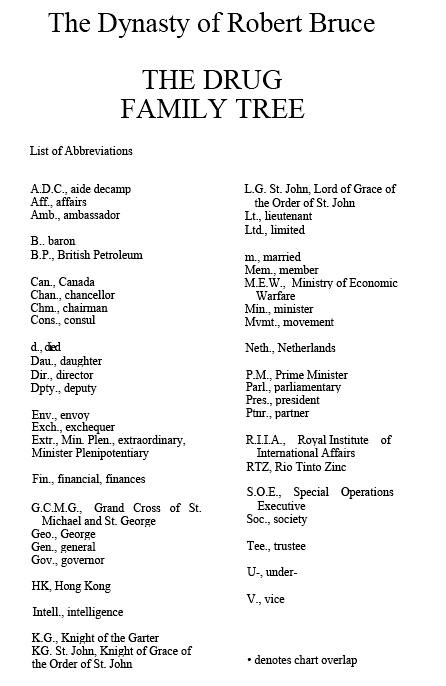
The article is reproduced in accordance with Section 107 of title 17 of the Copyright Law of the United States relating to fair-use and is for the purposes of criticism, comment, news reporting, teaching, scholarship, and research.
Source: http://vaticproject.blogspot.com/2014/04/all-in-family-real-syndicate-criminal.html




